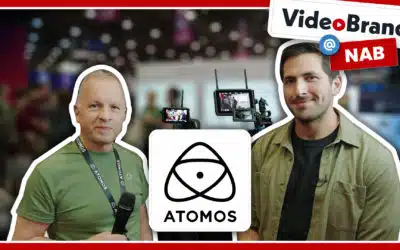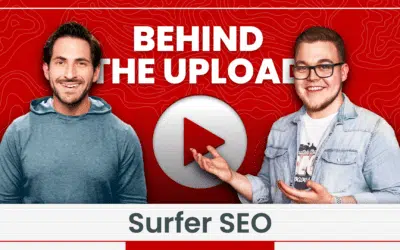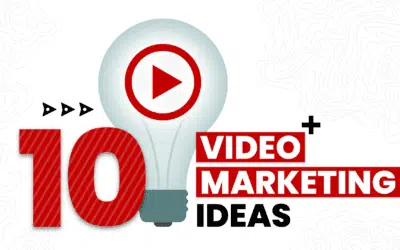It’s four days before the deadline for my Kickstarter project reaches its end. I’m only about a third of the way to my $9000 goal – a seemingly impossible feat.
A few hours later the goal is reached! So sudden? Anti-climactic? I know.
Now I wish I could say I received a miracle flood of donations in the 11th hour, or a mysterious backer stumbled on the project and became very interested. But no, it came from a phone call I made asking for an emergency bailout.
A few days later I wrote a check repaying this money. This is my Kickstarter experience.
So this post is not going to be pretty and inspirational, like Miao Wang raising $10,000 to go to SXSW (half of which came from one donor), or Driven raising $25,000, $12,000 of which they raised in the last four days.
Instead it might be a hard hitting dose of reality, but I think it’ll balance out the more popular success stories that you read that actually make you think this stuff is easy. And at the end are some things I learned that you can take away and learn from.
(Some backstory: I made a Kickstarter project to fund my feature documentary Bots High, which follows high school robotics teams built combat robots)
The Good
Now please don’t get me wrong, I’m still a huge fan of Kickstarter. I think the main thing to takeaway is it’s a tool, not a magical source of funding.
The best thing about having the project is it gave me a hard deadline, and forced me to do stuff I’ve been meaning to do for a while.
So I created the project. Within an hour I got a $25 pledge from a stranger. Yay, hopeful start! I posted the link on all my social networks, and got a good response, mostly from people invovled in the documentary and friends. But then it stalled.
I’m at about $600 and suddenly $9000 seems like a ridiculous ammount. So I started doing what I had been meaning to do – I emailed blogs. Tons of them.
I emailed anything to do with robots, science, technology, teaching. I created a press area on the site so they could grab photos, videos, and logos easily. I got a good response.
A few popular robotics sites wrote about the film, and RSS subscribers went from a handful to a couple hundred. So awareness of the film definitely went way up. Plus I created connections with blogs (and kept a spreadsheet of everyone I contacted, over 100 different sites), which will definitely come in handy once the film is done.
The Bad
Despite the good writeups on various sites, and increased traffic and subscribers, none of that really converted into donations.
Funding was still stalled around $600. I’ve read studies that people are more likely to give if the funding goal is closer to being reached, rather than really low. So I put in $1500 to bring the level to over $2000. Not exactly close to the goal, but at least it was something in the four digits. ((The study is down on page four of the article. Here’s the quote, “To see whether the strategy made sense, List and Reiley wrote letters to potential donors saying that the university wanted to buy computers for a new environmental-research center. They varied the amount of money that supposedly had already been raised. In some letters, they put the amount in hand at $2,000, out of the $3,000 they needed for a given computer; in others, they said they had raised only $300 and still needed $2,700. The results were overwhelming. The more upfront money Central Florida claimed to have on hand, the more additional money it raised.”))
My marketing campaign continued, and I feel like the awareness was great. I emailed all my mailing lists. A few weeks before the deadline I was the Kickstarter Project of the Day. The project was written about in the Miami New Times Blog (mainly because I was using Kickstarter).
So while awareness was great, that still didn’t convert into donations.
But you know what did work? Credible referrals. A super nice and famous robot builder that I met when he came to Miami wrote about my project on a robot forum. I got a few good donations from that, just because his opinion had a lot of weight and he liked the project.
The Ugly
You already know where this is going. It was a few days before the deadline and aside from a miracle I didn’t see anyway that I was going to reach the goal. I didn’t want to lose all the pledges I already had. Plus I couldn’t have an email going out to everyone saying the project wasn’t successful. I always said from the start that success or not, this is happening, it just depends how much hair I’m going to pull out and stress over.
So I called a relative and got bailed out. Not pretty. Not glorious. Not the ending I was hoping for (I could have used that money, especially now that I got rejected from the Tribeca Gucci Grant).
Epilogue
I learned a lot from this experience, and I think I know where I went wrong and what I can do better in the future (and what you can learn from my experience).
Larger Established Fan Base: Sure, I have a few hundred Fans on Facebook and picked up more fans while marketing the project, but this is my first film and I don’t have anywhere near Kevin Kelly’s 1,000 True Fans. It’s also harder to build a fan base and raise money in the early stages of a project, before you have something to show and spread. That’s why there’s so many finishing grants – they want to put their money on something that has a high chance of seeing completion.
People like a sure thing (preferably a completed thing): So I just touched on this, but it’s a tougher sell for a film in pre-pro or production. A lot of this stems from my short doc/experiment You 2.0. I had been pre-selling DVDs for a few months for $9.99. Got a few buys – I think 30 or so. Then when the DVD was actually done and I raised the price to $14.99, I got tons of orders. People weren’t willing to gamble on a pre-sale. They were fine paying more for a sure thing. So if you’re trying to raise funds while you’re in development or production, you just have to work that much harder to sell it to donors. ((Case in point: Beijing Taxi didn’t get its flood of donations until after their second email blast, which announced it was premiering at SXSW))
Be a Hustler or Find Someone Who Is: So by my standards, I hustled more than I ever have before. But that clearly wasn’t enough, and I should have found someone who is a born hustler to get in touch with more blogs and groups to promote the film (Jon Reiss talks about this, though it relates more to booking films in theaters. Either way, if you’re not a hustler, find someone who is).
Get on a high profile blog: This is pretty elusive and I might as well have put “Create a Smash Hit Viral Video,” but it’s worth mentioning. If I were to have gotten Fluffy on fire or some other video on Boing Boing or Gizmodo, I would have been set.
Going back to You 2.0, I’m not actively promoting it and pay zero for advertising, yet I get a few sales a week. Most of that is coming from two Lifehacker write-ups – one of a video of a guy talking about his office, and the other about a program I had developed (and there’s also an article I wrote on another popular blog about creating that program solely to drum up traffic). That’s how powerful these big aggregating sites are.
Goal Amount: As far as the whole post on the True Cost of a Kickstarter Project, I still stand behind the issues brought up there. But I might add to throw in a dose of reality. I probably should have set the goal lower, maybe $5,000. After all, more can always be raised (Like Diaspora, which is nearly 1800% over their goal. Insanity! A NY Times article does help. And Signal vs. Noise has an interesting explanation as to why people are giving to them.)
—–
I hope you found this useful. On a positive note, that survey I did that graphed behavior patterns of Kickstarter backers was spot on – all the donations I got pretty much matched the graph.
I’m curious to hear other Kickstarter stories that might not have ended so well, as well as other tips or things learned from fundraising. Leave them in the comments!




